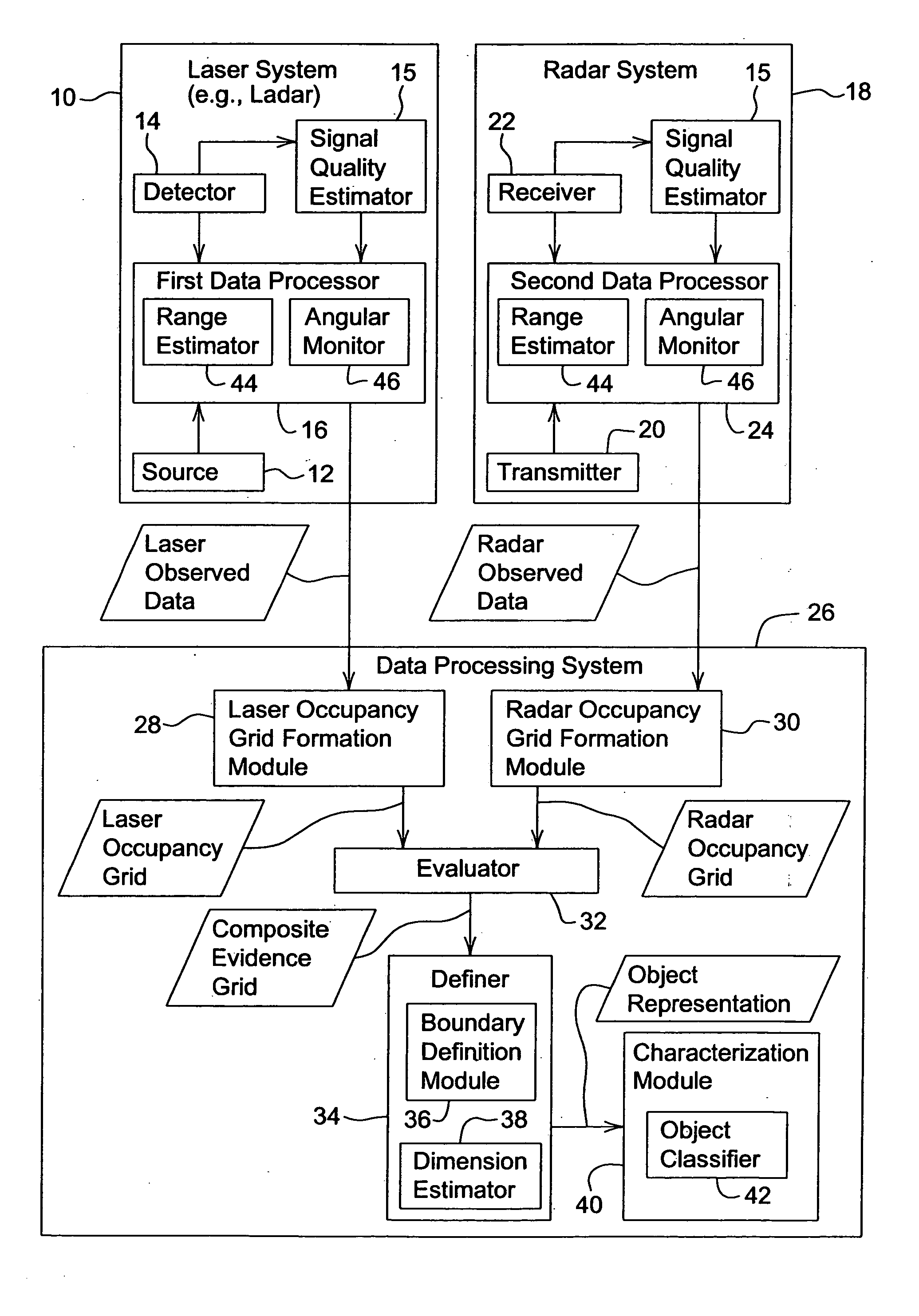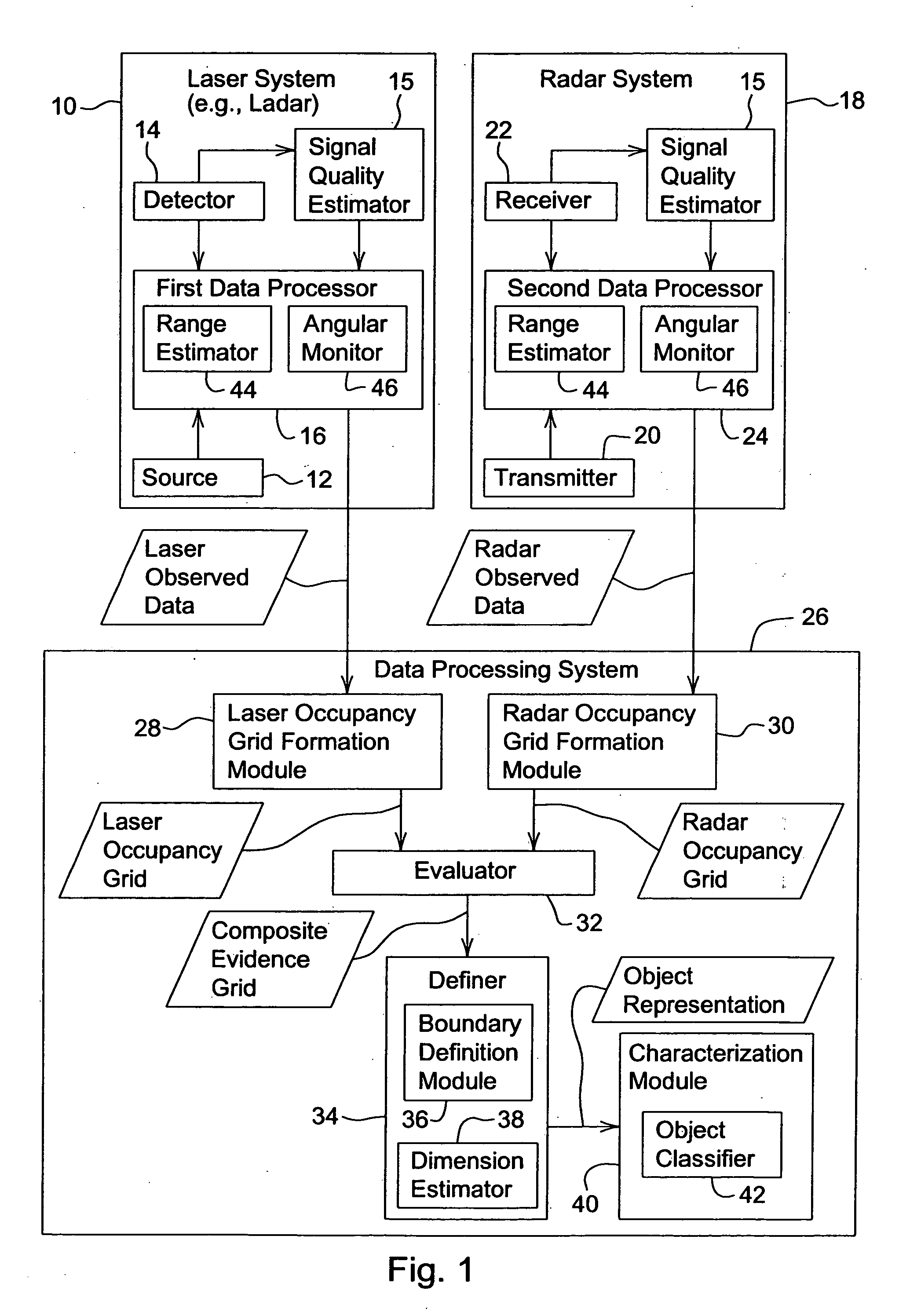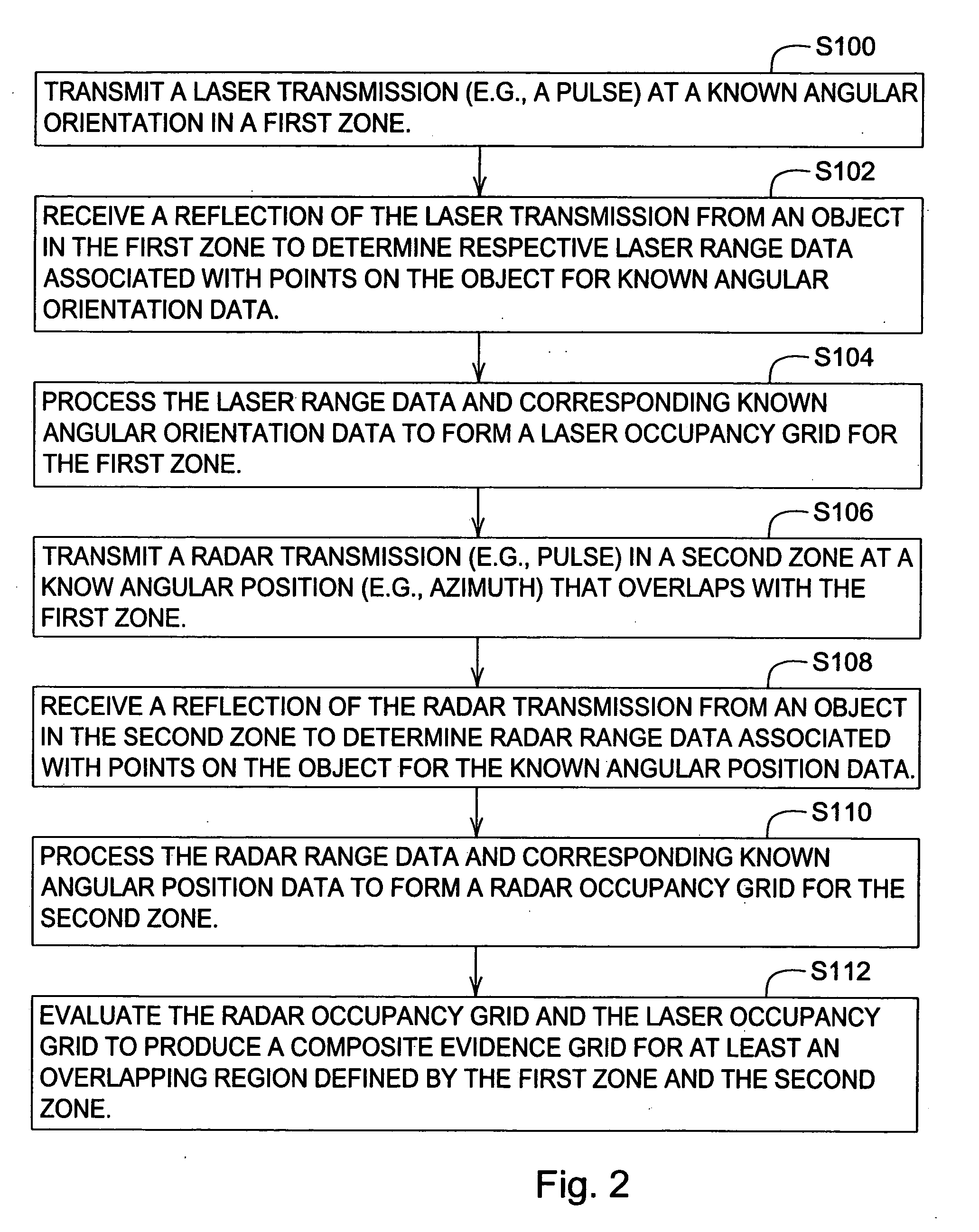Method and system for detecting an object using a composite evidence grid
a composite evidence and object technology, applied in the field of methods and systems for characterizing objects using composite evidence grids, can solve problems such as degrading the performance of laser range finders
- Summary
- Abstract
- Description
- Claims
- Application Information
AI Technical Summary
Problems solved by technology
Method used
Image
Examples
Embodiment Construction
[0012] In accordance with FIG. 1, a laser system 10 and a radar system 18 are coupled to a data processing system 26. The laser system 10 (e.g., ladar or laser range finding system) comprises a source 12, a detector 14, a signal quality estimator 15, and a first data processor 16. The radar system 18 comprises a transmitter 20, a receiver 22, a signal quality estimator 15, and a second data processor 18. The data processing system 26 comprises a laser occupancy grid formation module 28, a radar occupancy grid formation module 30, an evaluator 32, a definer 34, and a characterization module 40.
[0013] In accordance with FIG. 1, a source 12 transmits a laser transmission in a first frequency range at a known angular orientation in a first zone. A detector 14 receives a reflection of the laser transmission from an object in the first zone to determine laser range data associated with points on the object for known angular orientation data. A transmitter 20 transmits a radar transmissio...
PUM
 Login to View More
Login to View More Abstract
Description
Claims
Application Information
 Login to View More
Login to View More - R&D
- Intellectual Property
- Life Sciences
- Materials
- Tech Scout
- Unparalleled Data Quality
- Higher Quality Content
- 60% Fewer Hallucinations
Browse by: Latest US Patents, China's latest patents, Technical Efficacy Thesaurus, Application Domain, Technology Topic, Popular Technical Reports.
© 2025 PatSnap. All rights reserved.Legal|Privacy policy|Modern Slavery Act Transparency Statement|Sitemap|About US| Contact US: help@patsnap.com



